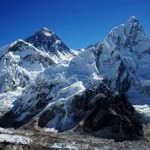
International experts gathered at the Smithsonian Institution for a meeting organized by the International Union for Conservation of Nature (IUCN)’s Commission on Ecosystem Management (CEM) to discuss the development of the IUCN Red List of Ecosystems, tailored after the IUCN Red List of Threatened Species.
Examples from Australia, South Africa, the United States and Venezuela of how ecosystems could be listed were discussed and the proposed criteria refined. How to make sure the Ecosystems Red List is compatible with the Red List of Threatened Species was a key focus of the discussion.
“There is a great potential to link the Red List of Ecosystems with the Millennium Assessment discussion on ecosystem services – the benefits we get from ecosystems. This in turn provides a powerful link into how ecosystems do (or do not) benefit the livelihoods of rural people, and so create greater responsibility for sustainable ecosystem management,” says Edmund Barrow, Acting Head of IUCN’s Ecosystem Management Programme.
The Red List of Ecosystems will help build strong links between ecosystems, livelihoods, health and well-being in a way that can be used to guide and influence conservation and national development agendas, reflecting the true value of ecosystem goods and services.
Next steps include publishing papers in key scientific journals and producing an ‘IUCN Red List of Ecosystems Categories, Criteria and Guidebook’ in English, Spanish and French.
A motion will be presented to the 2012 IUCN World Conservation Congress, calling for strengthening and consolidating the IUCN Red List of Ecosystems initiative.
“This workshop generated a lot of enthusiasm for this important process. It also overcame some of the arguments on the fine details that have hindered past efforts to develop such a red list,” says Jon Paul Rodríguez of IUCN’s Commission on Ecosystem Management, who is coordinating the initiative. “It also acknowledged the powerful links between the IUCN Red List of Ecosystems and wider societal processes, such as national economic and development planning.”
The meeting was organized by IUCN’s Commission on Ecosystem Management (CEM) with funding support from the MAVA Foundation, the Smithsonian Institution, EcoHealth Alliance and Provita, all IUCN Members.
About IUCN
IUCN, International Union for Conservation of Nature, helps the world find pragmatic solutions to our most pressing environment and development challenges. IUCN works on biodiversity, climate change, energy, human livelihoods and greening the world economy by supporting scientific research, managing field projects all over the world, and bringing governments, NGOs, the UN and companies together to develop policy, laws and best practice. For more information, visit www.iucn.org.
Source: International Union for Conservation of Nature (IUCN).













